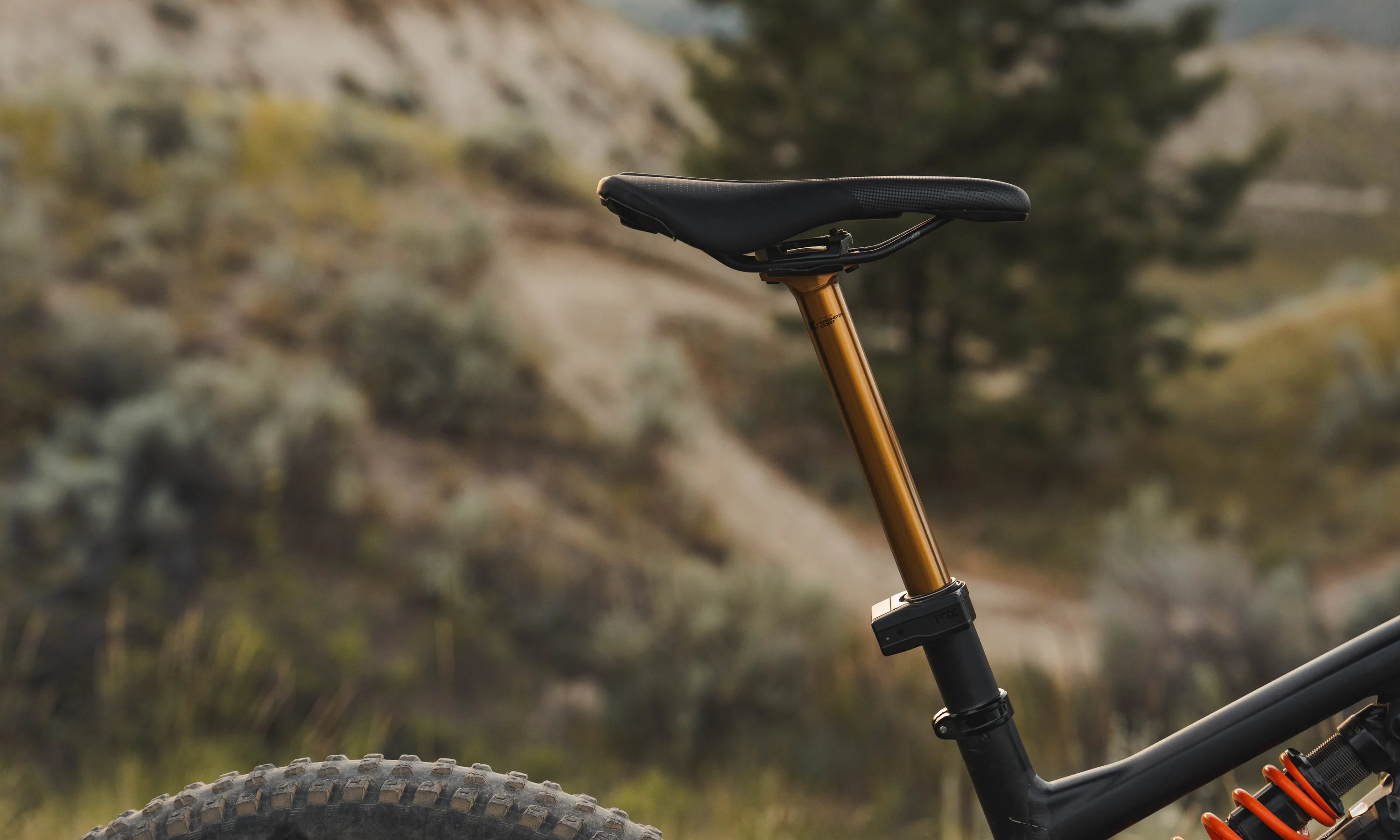Several years ago, Fox changed the full-face helmet game with its innovative Proframe helmet. This helmet was super light and extremely ventilated, making it perfect for riders who wanted the extra protection of a full-face, but still needed something light and breathable for pedaling uphill. Naturally, the Proframe became a favorite among enduro racers, and it spawned a plethora of competitors.
Now, there are tons of options on the market for riders searching for a full-face that will work for everything from trail riding to enduro racing, to the occasional trip to the downhill bike park. We take a closer look at the new, updated Fox Proframe RS, along with three of its most popular competitors: the POC Otocon Race, Troy Lee Designs Stage, and Specialized Gambit. What features stand out? What helmet will we pick as our favorite?
All of these lightweight full-face helmets are DH-certified, meaning they meet the ASTM standards for downhill use. All also use some form of MIPS rotational impact protection and breakaway visors to reduce the chance of concussion and neck and spinal injury during crashes.
Fox Proframe RS
- $360
- 750 grams
- 3-Position adjustable visor
- FIDLOCK magnetic buckle
- Highlights: Best ventilation, easy-to-remove cheek pads
The Proframe RS improves on the original with a new 3-position adjustable visor, giving riders the ability to tweak their visor and store goggles, plus a more integrated MIPS liner, and bigger vents for more ventilation. We felt the Proframe RS was the most ventilated of the four helmets tested, so it’s the best choice for hot days and big climbs. Also, while all the helmets here have removable cheek pads, but we found that the Proframe RS pads were by far the easiest to remove and reinstall, providing a nice boost in ventilation when needed.
The original Fox Proframe is still available and costs $65 less.

Fox Racing Proframe MIPS Bike Helmet Matte Black
$65.99
POC Otocon Race
- $350
- 750 grams
- Fixed visor
- Traditional side-release buckle
- Highlights: Best looks (in our opinion), most protective feeling
With its sleek and modern shape, the POC Otocon Race was our favorite in terms of looks. It also feels the most protective. What we mean by this is that it feels the most like a traditional downhill helmet in terms of coverage, while still being lightweight and ventilated. If you go to the downhill bike park regularly, this would be our pick. While it doesn’t have an adjustable visor, we found the Otocon’s breakaway visor to be the easiest to reinstall if it does break away.
The standard Otocon is also available for $90 less, but it forgoes MIPS rotational impact protection to reduce the cost.

POC Otocon Bike Helmet Hydrogen White Matte
$123.99
Troy Lee Designs Stage
- $300
- 690 grams
- Adjustable visor
- FIDLOCK magnetic buckle
- Highlights: Smallest shell, plushest pads

Troy Lee Designs Stage MIPS Bike Helmet
$82.99
The Troy Lee Designs Stage stands out thanks to two features. First, it has the slimmest profile of all the helmets here. In the same size, the shell is much smaller, reducing the “bobblehead” appearance many other full-face helmets have. Second, we were very impressed with the padding. It felt much plusher and more comfortable than the other helmets here. The downside is that the Stage doesn’t use an adjustable dial to fine-tune the fit (the other three do). Instead, riders will need to rely on the included extra pads which come in different thicknesses. In our hands, it also feels notably lighter than the Proframe RS and Otocon Race.
Specialized Gambit
- $300
- 640 grams
- Fixed visor
- Traditional side-release buckle
- Highlights: lowest weight, roomiest feeling fit
The Gambit was easily the lightest helmet we tried. Compared to other helmets of the same size, it also had the roomiest fit around the crown of the head. This will be good for riders with larger heads within a size range, with lots of hair, or anyone who feels claustrophobic in a full-face. For tech heads, the helmet is also ANGi ready, with a fit system mount designed for easy integration with Specialized’s ANGi crash sensor which will alert an emergency contact if you go down hard and hit your head on the trail.
When To Choose a Traditional Downhill Helmet
These lightweight full-face helmets are great for trail riding and enduro racing and are protective enough for occasional days at the downhill bike park. But if you’re a more dedicated downhill rider regularly taking lifts and shuttles, a traditional downhill helmet is still the preferred option because it is more protective. True DH helmets are heavier because they have stonger shells and more padding and foam to effectively absorb harder impacts. They also usually use a double D-ring buckle that is much more secure.
Our Lightweight Full-Face Helmet Picks
Bruce - Troy Lee Designs Stage
I was originally leaning toward the POC Otocon Race because it has the best looks and feels the burliest, but after trying on the TLD Stage, I was super impressed with the padding. It happened to fit my round head very well (oval heads might be tight) and I actually really liked that it didn’t look huge.
Clint - Fox Proframe RS
I like the color options from Fox the most, so that drew me in initially. What sold me though was the ventilation. I plan to wear a full face like this for everything, including trail riding, so the ventilation is a huge plus. Being able to pop the cheek pads so easily on a climb and just let them dangle until I get to the top is a feature I see myself using a lot.

























